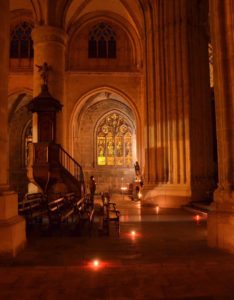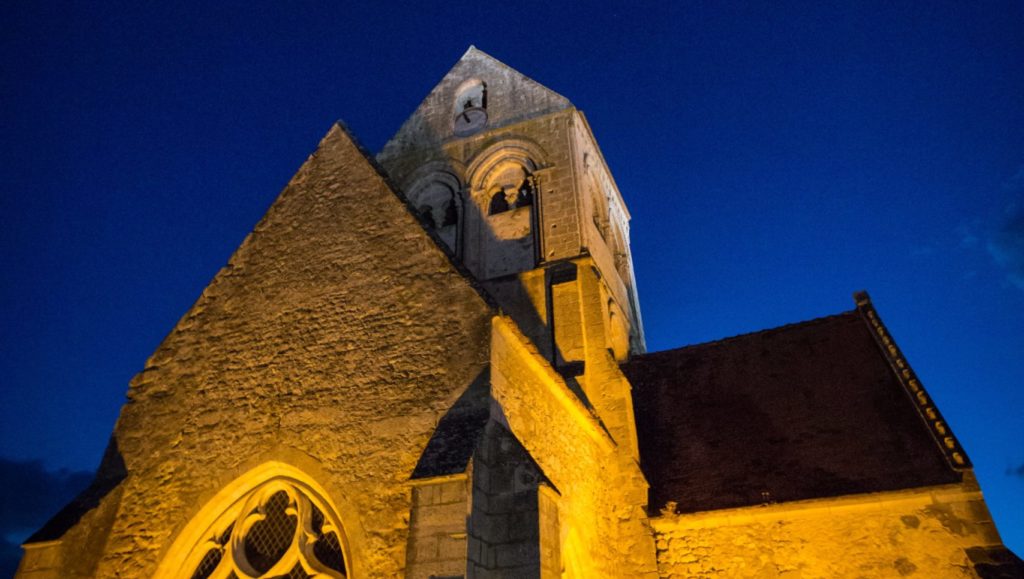"La nuit des églises" has become a must-go-to event in recent years for many French Catholics and those wanting to experience the beauty of the country's Christian heritage.
From June 22 to July 7, many of France's churches will open their doors in the evenings, after dark, for artistic and cultural events of "The night of churches," organized by the French bishops since 2011.
Under the law separating church and state, church buildings in France have been owned by the municipalities since 1905, while the state owns the cathedrals. Places of worship are only allocated to dioceses and their clergy. So "La nuit des églises" is organized through the collaboration of parishes and town halls, with the help of heritage preservation associations.
"There are about 42,000 parish churches in France," Father Gautier Mornas told OSV News. "They form a national heritage that is dear to us all."
Father Mornas is coordinator and promoter of the event, as head of the Sacred Art Department of the French bishops' conference. "More than 7,000 nights of churches have already been organized over the past 13 years," he said. "More and more churches are taking part in the event, including, this year, four of the five French churches in Rome, for the first time! It is a way of discovering or rediscovering, through art, what a church is, and the meaning of what is lived there."

"Participating churches will be open both literally and figuratively during the night", Father Mornas explained. "Until late into the night, the churches will welcome people who don't usually come here, for cultural and artistic programs, respecting the specificity of the place."
"The proposals are very varied," Father Mornas said, mentioning there will be torch-lit concerts, photographic exhibitions, chimes, lectures, theatrical performances and light shows on the stained-glass windows. In one of the churches in southern France, he said, a professional actor will read famous excerpts from French literature, from the centuries-old stone pulpit of a small town church.
This year, "La nuit des églises" is sponsored by the French Academy of Fine Arts. To launch the event, several academics welcomed 200 young people from the suburbs and rural communities May 29, invited to Paris by the bishops' conference, for a day of discovering Parisian churches.
"This meeting at the Academy of Fine Arts was a very powerful moment," Father Mornas explained. "The young people became aware that heritage is not just a legacy of the past, but also something that we are building today, and in which they too can be a stakeholder, right where they are."
Among the academia special guests was Thierry Escaich, organist and international concert artist and composer. He was appointed organist of Notre Dame Cathedral in Paris in April by the cathedral's rector. He will be one of four titular organists who, from Dec. 15, will give a concert every Sunday afternoon at Notre Dame, on the nearly 40-foot-high organ which, since the fire, has been completely dismantled, cleaned and reassembled.
The link between worship and culture is Father Mornas' specialty. He is a member of the commission appointed by the French Ministry of Culture, which is currently examining the candidacies of some 100 pairs of artists and master glassmakers who have applied to create the new contemporary stained-glass windows for Notre Dame Cathedral. The windows will be based on the biblical theme of the "tree of Jesse" and Isaiah's prophecy that the Messiah would be an "offspring of Jesse."
The committee will select a list of artists and forward it to the archbishop of Paris for discussion with President Emmanuel Macron. "Celebrities from the contemporary stained-glass market have not hesitated to take part in the competition, alongside lesser-known artists," said Father Mornas.
The issue of Notre Dame's stained-glass windows is also a delicate one, as many cultural and religious figures are opposed to the very idea of creating contemporary stained-glass windows for the cathedral. They would prefer to preserve the "grisailles," the clear, unpatterned stained- glass windows created in the 19th century, which the newly discussed version is intended to replace by 2026. The old ones were designed by architect Eugène Viollet-le-Duc, who restored Notre Dame at the time.
Even though this year's night of churches does not include Notre Dame, set to reopen Dec. 8, it is the one most discussed church in France these days.
In June a "frank discussion," Father Mornas said, took place in Paris regarding the cathedral's keys, which Macron was planning to solemnly hand over to Archbishop Laurent Ulrich of Paris at the official reopening of Notre Dame.
"The archbishop pointed out that while the state owns the cathedral and is piloting the works, the assignment of the cathedral to the Diocese of Paris has never been called into question or interrupted," Father Mornas said. "So he said there was no reason for him to receive the keys to the cathedral from the president."
Eventually, the case was fraternally resolved, Father Mornas added. "There will be no key handover, and no speech by Emmanuel Macron inside Notre Dame either, because there must be no political speeches in the cathedral. If (the president) has to speak that day, it will be on the square," he said.
"It is emblematic of the dialogue between church and state in France today! 'La nuit des églises' shows it: The organizers are half church bodies and half public players ... and it works!" Father Mornas told OSV News.

